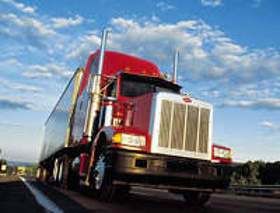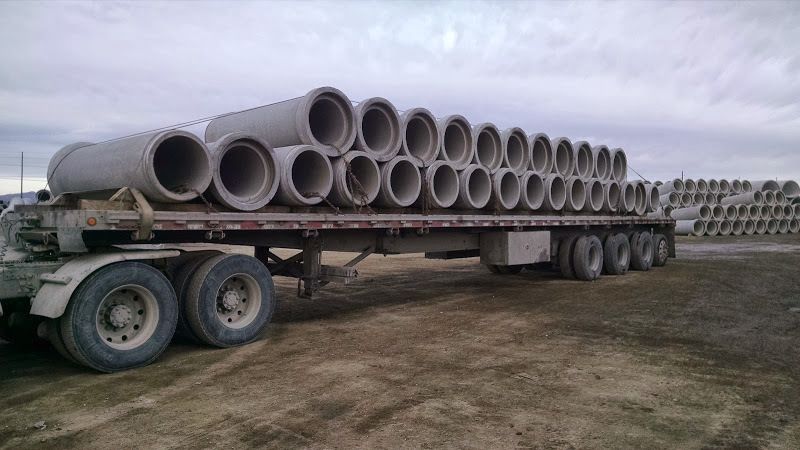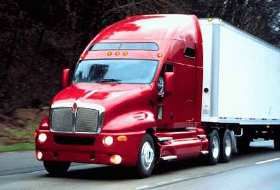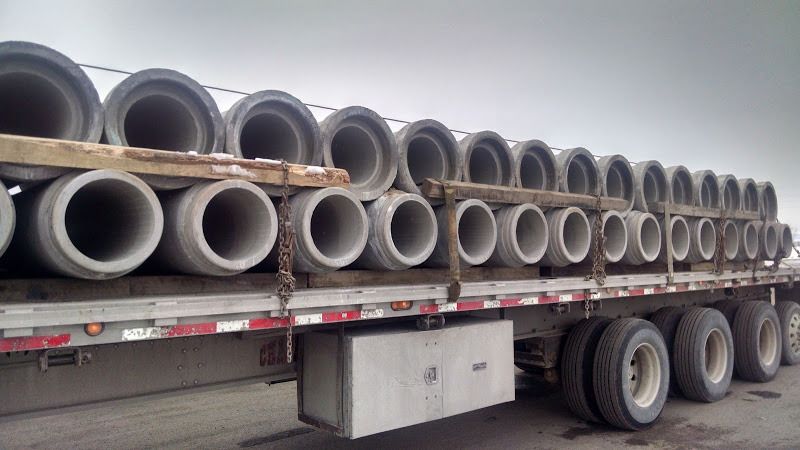Just A Little Securement Quiz
Topic 12797 | Page 1

I would guess to keep the top row secure from side to side movement
Allows you to put chains through the pipe without damaging it. If it wasnt there the chain and pipe would be in contact with each other and possibly damage the freight.
Also, aside from acting like a cushion for the top row, it also puts pressure on the bottom row thus helping it stay in place. Likewise, it also prevents the top row from moving side to side.
Lets see how this reefer driver did!
Reefer:
A refrigerated trailer.

Well, you both have got it pretty good, even the refer guy. The dunnage is on there to keep the pipe from moving sideways but there is also a catch that you cannot see. On the other side of the trailer the top layer of pipe looks just like the bottom layer on this side, it is the male end of the pipe that goes into the bell end like you see in the top layer. When you have pipe that is 18" or less it likes to go on what I call a walkabout. The pipe on the top layer on smaller pipe likes to move towards the bell end of the pipe or the heavy end if you will.
The pipe is staggered like this to protect the female end of the pipe as it will break very easily. So when you secure this pipe you NEVER use your cheater bar on the binders. The straps are there just to hold the 4x4 and I don't count that in my securement calculations. With the 8 chains and 2 cables (you can see one on top in the photo running lengthwise) I had 42k of securement on 63k of load. If you add in the 4 straps I have securement more than equal the load weight. This happens sometimes. In addition the pipe is blocked at the front and the rear of the load with wedge blocks.
Allows you to put chains through the pipe without damaging it. If it wasnt there the chain and pipe would be in contact with each other and possibly damage the freight.
Very good thought but when I secure the load the chain is always in contact with the pipe. There is no edge protection, you just have to be careful in how you tighten the binders. On the other side of the load the only edge protection that I used was for the straps because the pipe has a very rough texture to it. I have had one pipe break even with edge protection because I had the chain too tight. The chain has to be snug but you don't need to curl up the edges of the trailer kind of tight. Had this been a load with pipe larger than 18" I would not have used the 4x4s at all because the larger pipe just does not move. Now if you were to go down a road full of potholes at 60 mph that would be another story and all bets are off.
As a matter of fact, I know of one driver that was hauling 18" pipe and got cited because he did not have oversized flags and signs on. One piece of pipe had walked out far enough to require this all because he did not secure it like myself and other drivers do. Most drivers will use v-boards on the top of the second row but I find this to be simpler and more effective.
Here is a load from last year... No edge protection on this 24 inch pipe
 WOW! This has to be my longest post ever. Old School, you are a bad influence.
WOW! This has to be my longest post ever. Old School, you are a bad influence.

What do they use to unload? Seems like a heavy forklift with the 2 forks spaced properly would work good.

What do they use to unload? Seems like a heavy forklift with the 2 forks spaced properly would work good.
Most places have forks for a loader that they unload with. Two pipes at a time is a lot slower unloading than the 6 at a time when they are loading though. Every once in a while there is some bozo that does not have forks and they unload with a choker one at a time. Very irritating but hey, get paid by the hour.
Even using a choker, a good rigger could daisy chain multiple pipes together and the loader operator could set them down side by side.

What do they use to unload? Seems like a heavy forklift with the 2 forks spaced properly would work good.
You could always unload like this guy if you are in a hurry...
concrete pipe, how not to unload

There you go Pat, I'm not the one who is a bad influence - No, it's Anchorman and his big ideas!
New Reply:
New! Check out our help videos for a better understanding of our forum features

















Preview:








 TT On Facebook
TT On Facebook
Ok since most of you do not haul the concrete pipe that I do, I thought I would give a little quiz to see if you can process this with just a photo to look at. Who knows, if you go local you may end up hauling some of this stuff.
What I am looking for is the reason that the dunnage is on top of the first row of pipe. What does it do to secure the load?
Don't be afraid to make a guess, this is how we all learn.